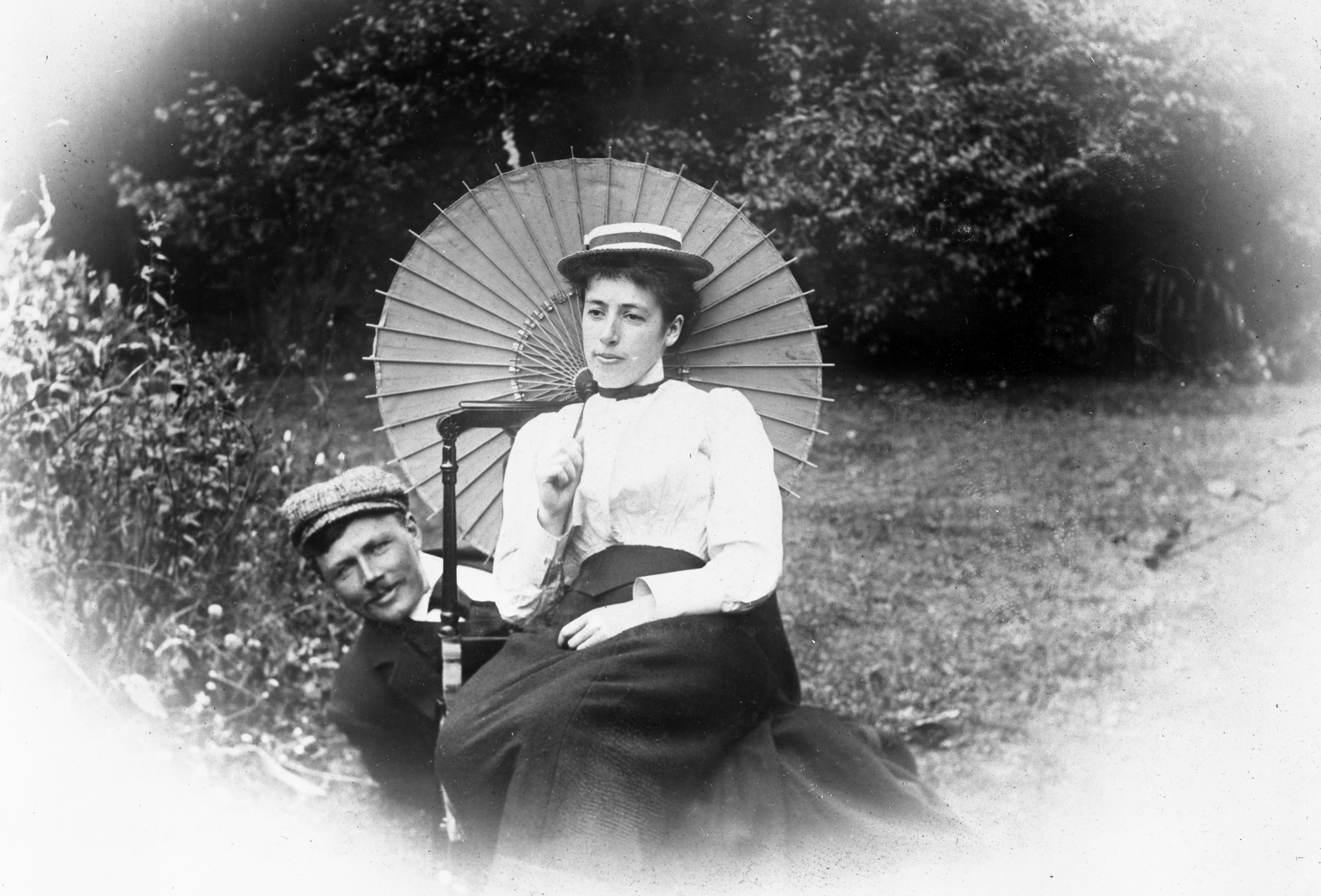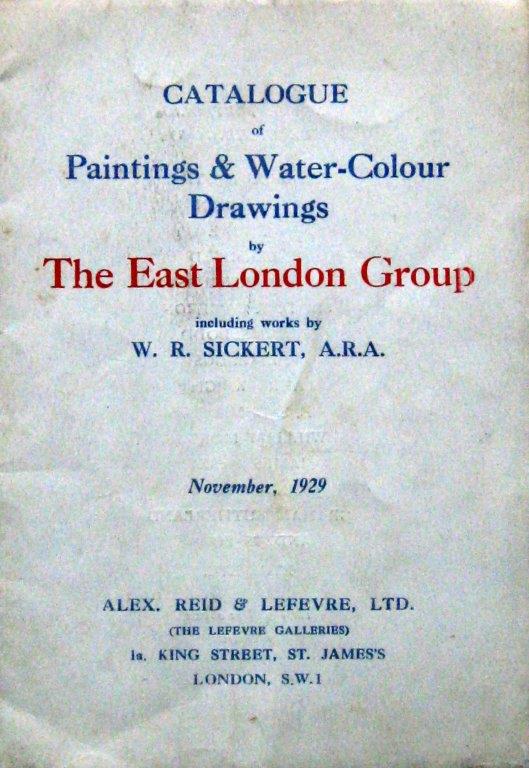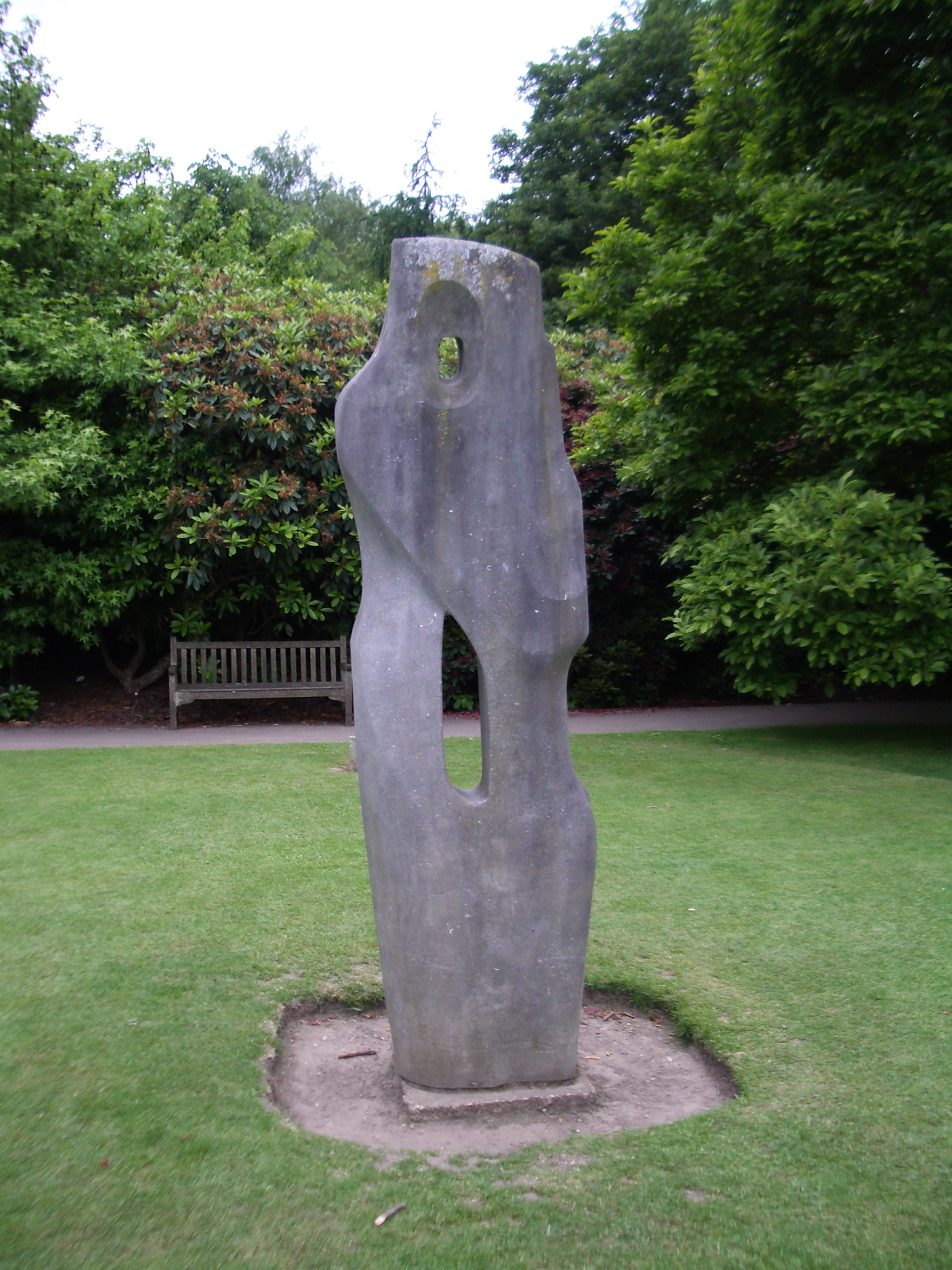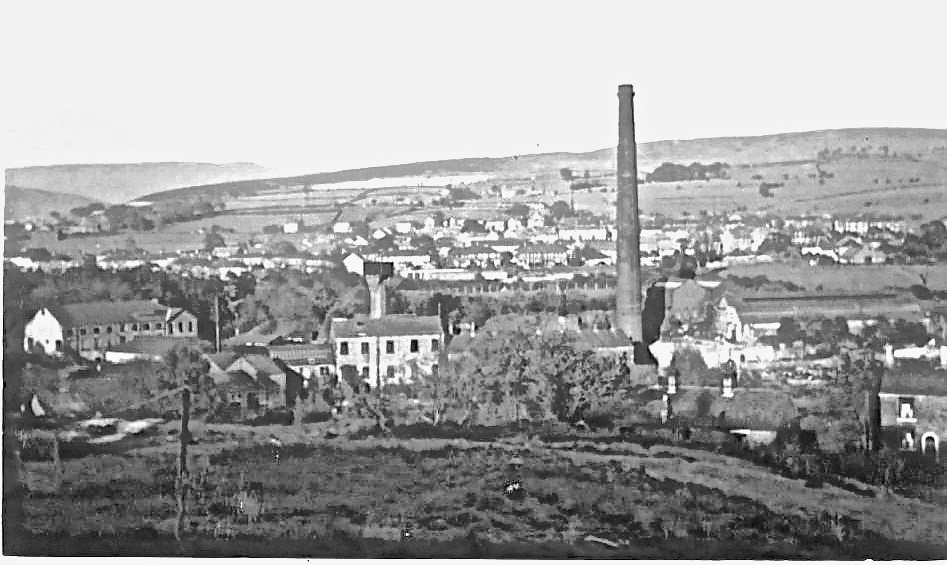|
Frances Hodgkins
Frances Mary Hodgkins (28 April 1869 – 13 May 1947) was a New Zealand painter chiefly of landscape and still life, and for a short period was a designer of textiles. She was born and raised in New Zealand, but spent most of her working life in England. She is considered one of New Zealand's most prestigious and influential painters, although it is the work from her life in Europe, rather than her home country, on which her reputation rests. Early life and education Hodgkins was born in Dunedin, New Zealand in 1869, the daughter of Rachel Owen Parker and W. M. Hodgkins, a lawyer, amateur painter, and a leading figure in the city's art circles. As a girl she and her sister, Isabel (later Field) attended Braemar House, a private girls' secondary school; both sisters demonstrated artistic talent early on and each became a successful landscape painter in her own right. Hodgkins first exhibited rural genre scenes and portraits in 1890 at art societies in Christchurch and Du ... [...More Info...] [...Related Items...] OR: [Wikipedia] [Google] [Baidu] |
Dunedin
Dunedin ( ; mi, Ōtepoti) is the second-largest city in the South Island of New Zealand (after Christchurch), and the principal city of the Otago region. Its name comes from , the Scottish Gaelic name for Edinburgh, the capital of Scotland. The city has a rich Scottish people, Scottish, Chinese people, Chinese and Māori people, Māori heritage. With an estimated population of as of , Dunedin is both New Zealand's seventh-most populous metro and urban area. For historic, cultural and geographic reasons the city has long been considered one of New Zealand's four main centres. The urban area of Dunedin lies on the central-eastern coast of Otago, surrounding the head of Otago Harbour, and the harbour and hills around Dunedin are the remnants of an extinct volcano. The city suburbs extend out into the surrounding valleys and hills, onto the isthmus of the Otago Peninsula, and along the shores of the Otago Harbour and the Pacific Ocean. Archaeological evidence points to lengthy o ... [...More Info...] [...Related Items...] OR: [Wikipedia] [Google] [Baidu] |
Académie Colarossi
The Académie Colarossi (1870–1930) was an art school in Paris founded in 1870 by the Italian model and sculptor Filippo Colarossi. It was originally located on the Île de la Cité, and it moved in 1879 to 10 rue de la Grande-Chaumière in the 6th arrondissement. The school closed in the 1930s. History A precursor art school in the same location was the Académie Suisse, founded in 1815. The former Académie Suisse location on the Île de la Cité was bought by Italian sculptor Filippo Colarossi in 1870, and in 1879 it moved to 10 rue de la Grande-Chaumière in the 6th arrondissement. The Académie was established in the 19th century as an alternative to the government-sanctioned École des Beaux Arts that had, in the eyes of many promising young artists at the time, become far too conservative. Along with its equivalent Académie Julian, and unlike the official École des Beaux Arts, the Colarossi school accepted female students and allowed them to draw from the nude male mo ... [...More Info...] [...Related Items...] OR: [Wikipedia] [Google] [Baidu] |
Saint-Tropez
, INSEE = 83119 , postal code = 83990 , image coat of arms = Blason ville fr Saint-Tropez-A (Var).svg , image flag=Flag of Saint-Tropez.svg Saint-Tropez (; oc, Sant Tropetz, ; ) is a commune in the Var department and the region of Provence-Alpes-Côte d'Azur, Southern France. It is west of Nice and east of Marseille, on the French Riviera, of which it is one of the best-known towns. In 2018, Saint-Tropez had a population of 4,103. The adjacent narrow body of water is the Gulf of Saint-Tropez (French: ''Golfe de Saint-Tropez''), stretching to Sainte-Maxime to the north under the Massif des Maures. Saint-Tropez was a military stronghold and fishing village until the beginning of the 20th century. It was the first town on its coast to be liberated during World War II as part of Operation Dragoon. After the war, it became an internationally known seaside resort, renowned principally because of the influx of artists of the French New Wave in cinema and the Yé-yé movement i ... [...More Info...] [...Related Items...] OR: [Wikipedia] [Google] [Baidu] |
Maude Burge
Maude Burge (née Williams, 18 May 1865 – 20 May 1957) was a New Zealand painter influenced by James Nairn. She spent time as an expatriate artist specifically in Europe. Burge was a painting companion of Frances Hodgkins who called Maude Burge a "charming changeable woman" in her published letters. They painted together at the Burge family home in St.Tropez and in Ibiza. Burge's paintings are held in the permanent collection of Auckland Art Gallery, the Museum of New Zealand Te Papa Tongarewa, the National Art Gallery of New Zealand, the Fletcher Trust Collection, the National Library of New Zealand and among private art collectors in the northern and southern hemispheres. Burge exhibited her paintings at the New Zealand Academy of Fine Arts. Biography Maude Burge was born in Wellington, New Zealand. Her career as an artist was part of the Modern Art movement. She created paintings in oils and watercolours. Burge painted portraits of the Māori in a modernist style. While ... [...More Info...] [...Related Items...] OR: [Wikipedia] [Google] [Baidu] |
Lefevre Gallery
The Lefevre Gallery (or The Lefevre Galleries) was an art gallery in London, England, operated by Alex. Reid & Lefevre Ltd. The gallery was opened at 1a, King Street, St James's, in 1926, when rival art dealers Alexander Reid and Ernest Lefevre joined forces. Upon Reid's death in 1928, his son, A J McNeill Reid succeeded him. Lefevre resigned in 1931. In 1950, the gallery relocated to premises at 30, Bruton Street, Mayfair. Among artists whose first British solo exhibitions were hosted by the gallery were Salvador Dalí, Edgar Degas, André Derain, L. S. Lowry, Amedeo Modigliani, Henri Rousseau, Gregorio Prieto and Georges Seurat, It also held the first London exhibitions for Bernard Buffet, Balthus and René Magritte. Others who exhibited there included Francis Bacon, Lucian Freud, Walter Sickert, Wyndham Lewis, and the East London Group. The gallery closed in 2002, citing competition from auction houses, changes in tax on works imported from outside the European Unio ... [...More Info...] [...Related Items...] OR: [Wikipedia] [Google] [Baidu] |
Lucy Wertheim
Lucy Carrington Wertheim (''née'' Pearson; 1882, in Whitechapel, London – 1971, in Brighton) was an English gallery owner who founded the Twenties Group of "English artists in their twenties" in 1930 and was Christopher Wood's main patron before his death. Lucy Carrington Pearson married Mari Paul Johan Wertheim (1878–1952) in 1902. He was born in the Netherlands and became a British citizen. She, with her husband, ran galleries in London, Brighton and Derbyshire and was known for encouraging many young artists and sculptors. In the 1920s she bought many works by Henry Moore and encouraged Cedric Morris. In 1930 she opened her first gallery at 3-5 Burlington Gardens, Mayfair, London. It has been suggested that it was the artist Frances Hodgkins who finally persuaded or perhaps goaded Mrs Wertheim to move from enthusiastic supporter of 'modern art' to a fully fledged gallery owner. Wertheim recalls the incident in her 1947 book 'Adventure in Art' - "Frances exclaimed to ... [...More Info...] [...Related Items...] OR: [Wikipedia] [Google] [Baidu] |
Henry Moore
Henry Spencer Moore (30 July 1898 – 31 August 1986) was an English artist. He is best known for his semi-abstract art, abstract monumental bronze sculptures which are located around the world as public works of art. As well as sculpture, Moore produced many drawings, including a series depicting Londoners sheltering from the Blitz during the Second World War, along with other graphic works on paper. His forms are usually abstractions of the human figure, typically depicting mother-and-child or reclining figures. Moore's works are usually suggestive of the female body, apart from a phase in the 1950s when he sculpted family groups. His forms are generally pierced or contain hollow spaces. Many interpreters liken the undulating form of his reclining figures to the landscape and hills of his Yorkshire birthplace. Moore became well known through his carved marble and larger-scale abstract cast bronze sculptures, and was instrumental in introducing a particular form of modernism ... [...More Info...] [...Related Items...] OR: [Wikipedia] [Google] [Baidu] |
Ben Nicholson
Benjamin Lauder Nicholson, OM (10 April 1894 – 6 February 1982) was an English painter of abstract compositions (sometimes in low relief), landscape and still-life. Background and training Nicholson was born on 10 April 1894 in Denham, Buckinghamshire, the son of the painters Sir William Nicholson and Mabel Pryde, and brother of the artist Nancy Nicholson, the architect Christopher Nicholson and to Anthony Nicholson. His maternal grandmother Barbara Pryde (née Lauder) was a niece of the famous artist brothers Robert Scott Lauder and James Eckford Lauder. The family moved to London in 1896. Nicholson was educated at Tyttenhangar Lodge Preparatory School, Seaford, at Heddon Court, Hampstead and then as a boarder at Gresham's School, Holt, Norfolk. He trained as an artist in London at the Slade School of Fine Art between 1910 and 1911, where he was a contemporary of Paul Nash, Stanley Spencer, Mark Gertler, and Edward Wadsworth. According to Nash, with whom he ... [...More Info...] [...Related Items...] OR: [Wikipedia] [Google] [Baidu] |
Barbara Hepworth
Dame Jocelyn Barbara Hepworth (10 January 1903 – 20 May 1975) was an English artist and sculptor. Her work exemplifies Modernism and in particular modern sculpture. Along with artists such as Ben Nicholson and Naum Gabo, Hepworth was a leading figure in the colony of artists who resided in St Ives during the Second World War. Born in Wakefield, Yorkshire, Hepworth studied at Leeds School of Art and the Royal College of Art in the 1920s. She married the sculptor John Skeaping in 1925. In 1931 she fell in love with the painter Ben Nicholson, and in 1933 divorced Skeaping. At this time she was part of a circle of modern artists centred on Hampstead, London, and was one of the founders of the art movement Unit One. At the beginning of the Second World War, Hepworth and Nicholson moved to St. Ives, Cornwall, where she would remain for the rest of her life. Best known as a sculptor, Hepworth also produced drawings – including a series of sketches of operating rooms ... [...More Info...] [...Related Items...] OR: [Wikipedia] [Google] [Baidu] |
Seven And Five Society
The Seven and Five Society was an art group of seven painters and five sculptors created in 1919 and based in London. The group was originally intended to encompass traditional, conservative artistic sensibilities. The first exhibition catalogue said, " efeel that there has of late been too much pioneering along too many lines in altogether too much of a hurry." Artist Ben Nicholson joined in 1924, followed Henry Moore and Barbara Hepworth, and changed the society into a modernistic one and expelled the non-modernist artists. In 1935, the group was renamed the Seven and Five Abstract Group. At the Zwemmer Gallery in Charing Cross Road Charing Cross Road is a street in central London running immediately north of St Martin-in-the-Fields to St Giles Circus (the intersection with Oxford Street) and then becomes Tottenham Court Road. It leads from the north in the direction ..., London, they staged the first exhibition of entirely abstract works in Britain. [...More Info...] [...Related Items...] OR: [Wikipedia] [Google] [Baidu] |
Calico Printers' Association
The Calico Printers' Association Ltd was a British textile company founded in 1899, from the amalgamation of 46 textile printing companies and 13 textile merchants. The industry had prospered in the latter half of the 19th century but the fierce competition led to a decline in quality and profit margins. Most of the leading companies in the industry decided to amalgamate in order "to preserve the tradition and standing of calico printing and to produce textiles of a high standard at reasonable prices." The company at its inception accounted for over 80% of Britain’s output of printed cloth.Calico Printers’ Association Limited (1949) ''50 Years of Calico Printing'' The Calico Printers' Association Limited was incorporated on 8 November 1899 with an issued share capital of £8,200,000, consisting of £5,000,000 share capital and £3,200,000 of debenture stock. Under the chairmanship of F. F. Grafton, the company established its first head office at 2 Charlotte Street, Manchest ... [...More Info...] [...Related Items...] OR: [Wikipedia] [Google] [Baidu] |
Margaret Butler (sculptor)
Margaret Mary Butler (30 April 1883 – 4 December 1947) was a New Zealand sculptor and artist and is regarded as the first New Zealand born sculptor of substance. Early life and education She was born in Greymouth, West Coast, New Zealand on 30 April 1883, to Edward Butler, Grey County engineer, and his wife Mary Delaney. She attended St Mary's College, Wellington and then at Wellington Technical School Work Butler's works were feature at the National Centennial Exhibition of New Zealand in 1940 and the largest collection of her work is held by Te Papa Tongarewa, the Museum of New Zealand. (Retrieved 16 July 2022) Death Margaret Butler died in ...[...More Info...] [...Related Items...] OR: [Wikipedia] [Google] [Baidu] |



.jpg)




.jpg)